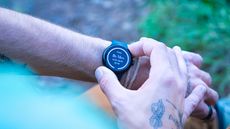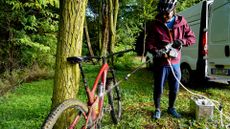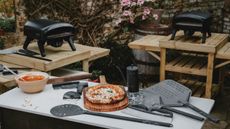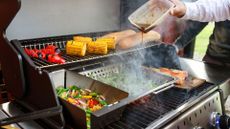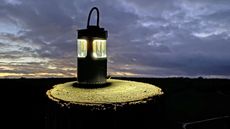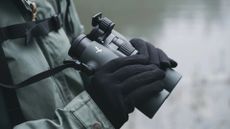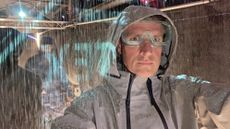Best hiking GPS 2024: Quick links
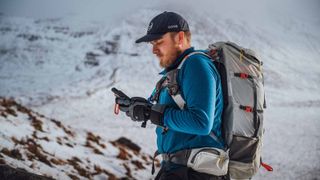
01. Best overall: Garmin inReach Mini 2
02. Best for mapping: Garmin GPSMAP 65s
03. Best budget: Garmin eTrex 10
04. Best high-end: Garmin Oregon 700
05. Best for satellite comms: Garmin GPSMAP 66i
06. Best for offline maps: Garmin eTrex 32x
The best hiking GPS units will prevent a minor navigational slip from snowballing into potentially dangerous territory. They are available in a wide range of abilities, price points and sizes, from cheap and cheerful basic units for occasional use to professional-grade mapping tools that’ll locate you in seconds anywhere on the planet.
Having a hiking GPS at hand when trying to navigate your way in the wilderness can prevent numerous nightmare scenarios. Locating precisely where you are and which direction you need to head in to get to your destination is not always as simple as it sounds, especially in poor conditions, whether you’re out for a Sunday stroll or taking on a winter hill-walking challenge.
This guide focuses on handheld units, but many of today's best outdoor watches and best smartwatches in general also include GPS capabilities, so you'll also find a few wrist-based options in there too. It'll come as no surprise that the brand that dominates is Garmin, a market leader that also crops up repeatedly in our best sat nav and best golf GPS watch rankings.
Best hiking GPS to buy right now
Why you can trust T3
Best overall
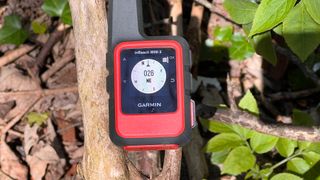

We think the best hiking GPS in terms of outright capability is the Garmin inReach Mini 2. This unit offers mapping features and plenty more besides. It offers everything that the original model did, but faster and with more accuracy, thanks to multiple satellite service support and faster location fixes. Garmin has also added a new digital compass, and the display has been improved too.
You can store up to 500 waypoints, favourites or locations and up to 20 navigation routes; the (excellent) iOS or Android companion app makes it easy to set and sync points and routes. The build quality is compact and tough, and the rechargeable battery will get you up to 30 days of battery life.
Read our full Garmin inReach Mini 2 hiking GPS review.
Best for mapping
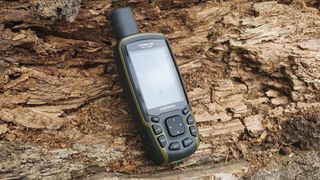

If mapping is your priority, the Garmin GPSMAP 65s could be the best hiking GPS for you. While this option has a shorter feature list than others in our ranking – most notably, it lacks communications features and is powered by batteries rather than being rechargeable – it shines when it comes to pure mapping power. With an additional altimeter and 3-axis compass over the standard model, the 65s pairs old-school button operation with new-school pan-global mapping abilities.
The TopoActive Europe maps are detailed and easily zoomable to immediately show you where you are, what that river or contour line you can see is, and where your destination is. Basically, exactly what you want from a GPS unit. IPX7 waterproofing means this GPS will work underwater (for 30 mins at least), so it should cope just fine with unpredictable weather.
Read our full Garmin GPSMAP 65s review.
Best budget
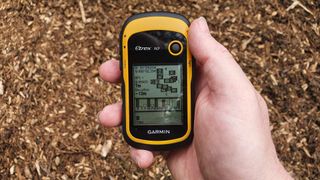

If you're on a tight budget, the best hiking GPS for you is the modestly priced Garmin eTrex 10 GPS. Don't expect lots of bells and whistles for your money, but don't expect it to be cheap nonsense either: it's sturdy, water-resistant (IPX7) and gets an impressive 25 hours from a pair of AA batteries. The 128 x 160mm screen is clear, and the buttons are easy to use one-handed. The E-Trex 10 GPS is compatible with Garmin Connect and Garmin Basecamp. It enables you to store 1,000 waypoints/favourites and 50 routes; it can track 10,000 points and save up to 100 tracks. However, you can't load additional mapping, and it lacks an SD card slot for expanding the memory.
Read our full Garmin eTrex 10 review.
Best high-end
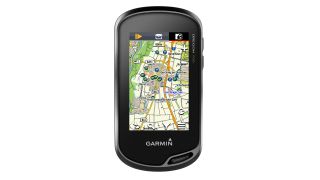

The Oregon 700 is the successor to the much-loved but now discontinued Garmin Oregon 650T, which expert testers described as the most wide-ranging hiking GPS receiver on the market. The newer version retains the impressively durable, sunlight-readable touch screen and useful camera, has a redesigned antenna for better reception and has expanded wireless connectivity with support for Active Weather and Geocaching Live. There's also a year's free subscription to BirdsEye satellite imagery. Unlike many handheld GPSs, here you have the option of running the Oregon on twin AAs, or using a rechargeable battery pack. Being able to swap the pack out for a pair of AAs is good for peace of mind on longer hikes, while those trying to cut down on disposable battery use will appreciate the option to recharge.
Best for satellite communication
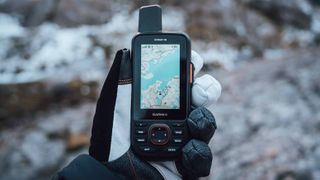
If you are planning on charting a course through remotest Patagonia or slashing through a jungle in Borneo, there is no doubt this device will be critical to mission success. For those with slightly less lofty ambitions, most modern smartphones - and certainly Garmin’s Fenix, Instinct and Marq smartwatch range - also make great companions (with SOS functionality) without the added bulk. Add the InReach subscription into the mix, and it is a lot to justify for those doing a spot of fell walking at the weekends. But if you are serious about adventure, there is very little else that compares to Garmin’s box of tricks.
Read our full Garmin GPSMAP 66i review.
Best for offline maps
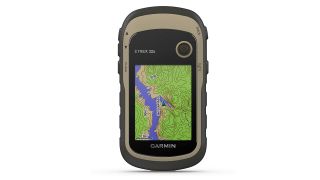

A slightly older model, the eTrex 32x is available as a standalone GPS or as part of a bundle with vouchers for additional maps, and whichever you pick, chances are you'll be able to find a decent deal. The 32X has more memory (although not much of it is available to you because of the very large pre-installed TopoActive map), and the menus are a little different. It supports both GPS and GLONASS, and it has both a magnetic compass for fast direction-finding and a barometric altimeter for accurate measurements of your trail’s ups and downs. Hardware-wise, it’s not exactly a radical upgrade. But it’s the TopoActive map that really matters here.
How to chose the best hiking GPS for you
The key things to keep an eye out for when choosing the best hiking GPS unit for you are the number of satellite systems they can access (more is usually faster and more accurate), battery life, and your intended use. Basic units are brilliant as emergency tools but awful to actually use as intensive navigational tools, while some of the beautiful touchscreen units might look nice in the shop but won't work as well in driving rain or when wearing gloves.


